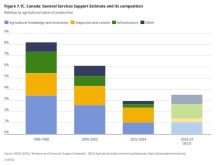U. S. Agriculture Secretary Tom Vilsack said Oct. 13 the government’s decision to boost the amount of ethanol allowed in U. S. gasoline was a strong signal the Obama administration will establish a strong U. S. ethanol industry.
“Today’s announcement on E15 for 2007, 2008, 2009, 2010 and beyond is a positive signal that we are in the business of helping this industry to grow and to be sustainable over time,” Vilsack told Reuters on the sidelines of the World Food Prize Forum.
Earlier, the U. S. Environmental Protection Agency (EPA), in a decision favoured by corn farmers and biofuel makers but opposed by auto and food makers, raised the amount of fuel that can be blended into gasoline to 15 per cent, up from the current 10 per cent, for cars and light trucks made in 2007 or later.
Read Also

Canada seventh on agri-food influence
Comparison of 19 G20 countries says Canadian agri-food needs investments, processing, action on retail consolidation to realize potential
According to the Renewable Fuels Association, E15 for 2007-or-newer cars will add as much as 1.5 billion gallons of additional ethanol demand, compared to the 10.6 billion gallons produced by refiners in 2009.
Food makers have renewed complaints that ethanol will also fuel food inflation, since a third of the U. S. corn crop – the world’s largest – has already been given over to fuel. Economists say that has boosted prices of meat and poultry by driving up feed prices.
Vilsack rejected those concerns.
“I am convinced in the long term we have the capacity to produce a sufficient amount of corn and we will be using additional new feed stocks to be able to meet additional demand,” Vilsack said, referring to ethanol corn byproducts known as distiller’s dried grains.














